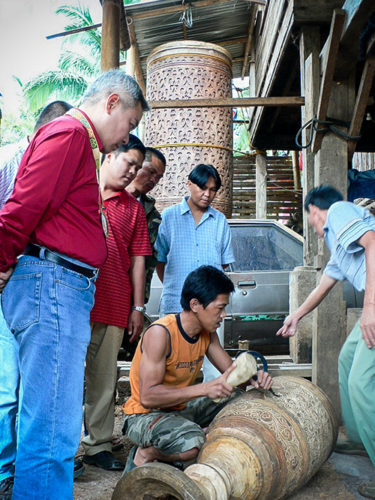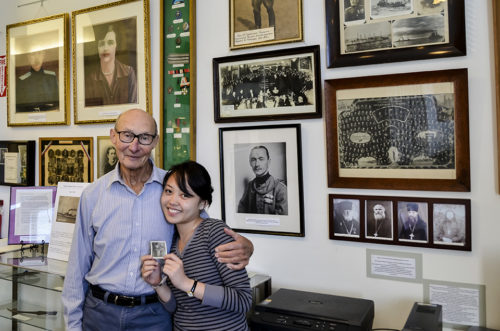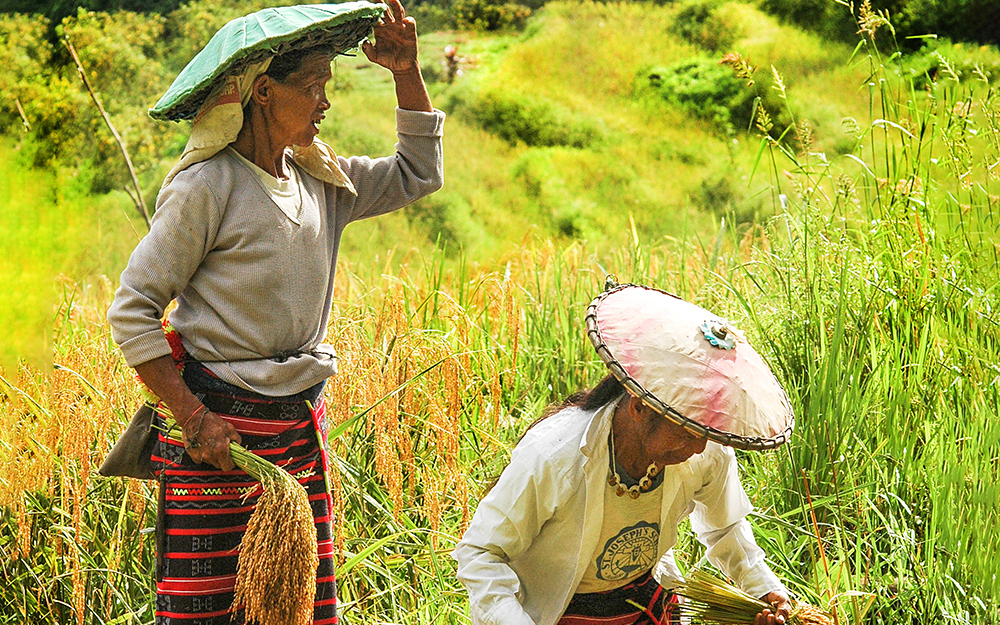Eric B. Zerrudo
Professor, University of Santo Tomas-Center for Conservation of Cultural Property and the Environment in the Tropics (USTGS-CCCPET)
The University of Santo Tomas-Graduate School Center for Conservation of Cultural Property and the Environment in the Tropics (USTGS-CCCPET) was established in 2003 primarily to advance research and advocacy on heritage conservation and sustainable development. At a time when heritage was at risk all over the world, pressured by globalization, climate change, migration, tourism, and terrorism, the search for memory and identity became more pronounced and more assertive. The main objectives of the Center are to
- promote an atmosphere conducive to and provide opportunities for research led by the Graduate School—Master of Arts in Cultural Heritage Studies program;
- conduct exchanges in research and collaboration in projects among the professions responsible for the care of the cultural heritage and related activities in the tropics;
- render services by providing consultation, training, and technical assistance to institutions, cultural heritage workers, and students;
- and disseminate information and promote deeper understanding of conservation and care of cultural property and environment in the tropics through by conducting conferences, seminars, and training and publishing materials.
Intangible heritage had been overshadowed by the preponderance of built heritage in the Philippines. Traditionally lodged under anthropological and sociological studies, the intangible dimension of heritage had only been staged in the limelight after the adoption of the 2003 Convention for the Safeguarding of the Intangible Cultural Heritage. Under the purview of this Convention, the Ifugao “Hudhud” and the Maranao “Derangen” chants were recognized in the Representative List of Intangible Cultural Heritage of Humanity. In 2015, the Ifugao punnuk or tugging ritual was part of the multinational inscription for tugging rituals and games, along with tugging rituals and games of Korea, Cambodia, and Vietnam.

Cultural Heritage Mapping of Tugaya, Lanao del Sur © USTGS-CCCPET
For the Center, research, discussions, and concerns on intangible cultural heritage surfaced in some major projects and activities conducted throughout the country. Cultural heritage mapping projects have been undertaken in world heritage sites, provinces, cities, and municipalities. One major module is the intangible heritage identification and documentation, which covers festivals, song, dances, beliefs, skills, literature, recipes, language, jokes, practices, herbal treatments, well-being, and secret knowledge. In Butuan, Agusan del Norte Province, the mappers documented the ancient boat building tradition of Butuan—balangay, dated from the ninth to twelfth centuries and is currently practiced by the indigenous Monobo and Sama communities. In Samar Province, the mappers observed a shaman perform the traditional healing ritual to ward off evil spirits using live chicken to swathe all over the body of the sick. In Boac, Marinduque Province, the mappers studied the Moriones Festival, from the mask making to the actual dramatization of the Holy Week Ceremony. In Tugaya, Lanao del Sur Province, outstanding artisans of Maranao crafts and arts were recognized by the local government for transmitting traditions to younger generations. The cultural mapping project increased the visibility and viability of intangible cultural heritage elements, and many of these forgotten community elements resurface.
The Center prioritizes Catholic church heritage conservation programs and projects. As the Royal and Pontifical University of Asia, the University of Santo Tomas through the UST GS CCCPET serves as the national coordinator of the Catholic Bishops Conference of the Philippines (CBCP) Episcopal Commission for the Cultural Heritage of the Church. Every two years, a national conference is held in different dioceses to share experiences, issues, and concerns related to church heritage. In Ozamiz, Misamis Occidental, the research on liturgical music and Spanish religious cantorals shed light on the dying tradition. In Sorsogon Province, the Las Pinas bamboo organ, one of its kind in the world, was discussed and dissected to create awareness on the intricacy of this musical instrument and the ingenuity of local craftsmen to develop the mechanism in the Spanish colonial period. In Bohol Province, the massive 2013 earthquake devastation to churches led to the analysis of Spanish colonial church architecture which focused on the unreinforced building, construction materials, geographical sources, and the skills, techniques, and methodologies of the builders. The conservation of church-built heritage could be enriched substantially by researching, understanding, and respecting the intangible associations of the whole system.
Built heritage conservation is a staple activity of the Center with its close coordination with the College of Architecture and Fine Arts in the University. Gradually, the Center introduces the intangible heritage concept, particularly the aspects of geomancy, feng shui, and other cosmological dimensions, to students and researchers. This effort to weave the intangible into the built heritage was exemplified in the infrastructure guidelines projects for the World Heritage sites of the Philippines. The Center facilitated the development of infrastructure guidelines to three Philippine World Heritage Sites. In the Rice Terraces of the Philippine Cordilleras, the CCCPET research team documented and analyzed the traditional Ifugao houses, variegated as Kiangan, Banaue, Hungduan, and Mayoyao—particularly, the house parts vocabularies used by each community, the geomancy of the houses, and the rituals associated to house construction. In the World Heritage City of Vigan, the CCCPET contributed some information to the Homeowner’s Preservation Manual. In the Puerto Princesa Subterranean River National Park (PPSRNP), CCCPET researchers developed the infrastructure and activity guidelines after an initial cultural heritage mapping activity. With the whole park viewed sacred by the indigenous Tagbanwa community, the guidelines integrated intangible principles on environmental and cultural sensitive house construction. In the Philippine context, conservation must respect the insoluble link of tangible and tangible heritage.

CHS student with white Russian Nikolai Hidchenko (TRMP)
during her interview © USTGS-CCCPET
The Center serves as the research and field work arm of the UST Graduate School for Cultural Heritage Studies program. Some graduate students have written their thesis highlighting the intangible aspect of cultural heritage. One topic was on the carosa tradition of the Catholic church—the discussion focused on the processional carriage during the patron festivals and included the history, elements, typologies, construction, iconography, and issues on this practice. Currently, a student is writing on the site-specific culinary tradition of lomi, a noodle dish sourced from mainland China that has been adopted and popularized by Batangas Province. This study discusses the evolution of the intangible culinary heritage, its iterations using non-traditional condiments and new flavors, and the way it has become an identity of the local community. Another milestone was the memory project conducted by the student who documented the journey and experiences of white Russians in Tubabao Island in Eastern Samar Province immediately after World War II. This pioneering study translated the documentation of the experience from the memory phase to the contemporary social value of the community. This translation of intangible cultural heritage led to a paradigm on how to measure social value.
In 2016, the Center was the focal agency for the UNESCO National Commission of the Philippines for matters related to the 2003 Convention. With the Philippines as member of the Convention Committee, it coordinated with the National Commission for Culture and the Arts (NCCA) Intangible Cultural Heritage Unit and convened the panel of experts to review the nominations for the Representative List, Urgent Safeguarding List, and Register of Good Practices. The novel exercise opened new areas of understanding deeper discussions on issues related to intangible cultural heritage. It also opened new opportunities to involve more researchers for scholarship, visibility, and viability. With more avenues and opportunities for open discussion and collaboration, the Center works closely with the NCCA to popularize the documentation of intangible heritage even at various local levels of society.







